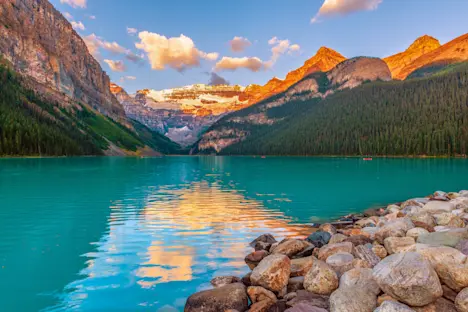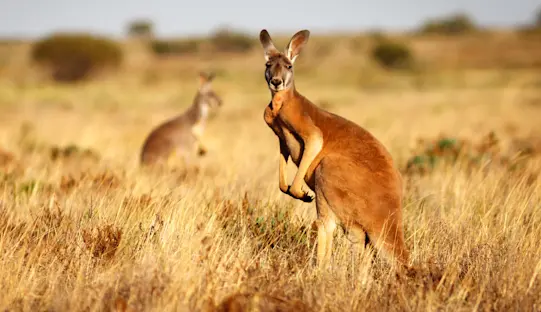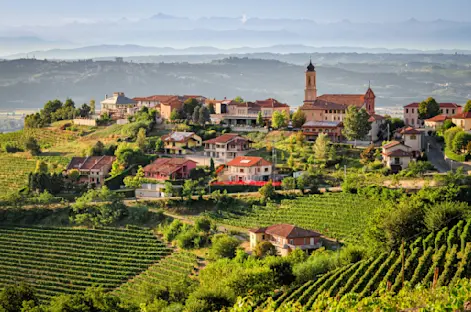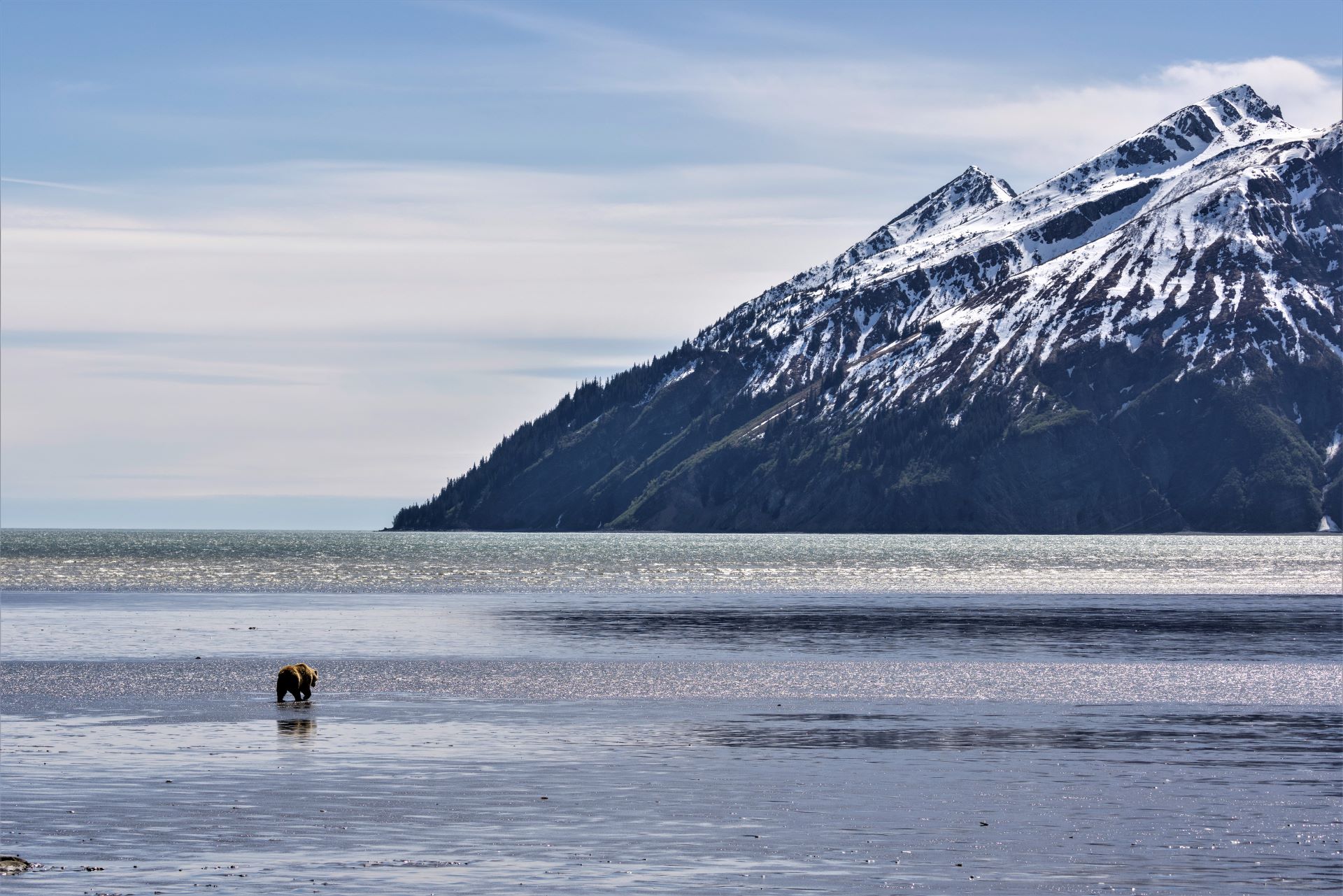In 1965, an army veteran named Wayne Byers was looking for a place to settle and happened upon Alaska’s Chinitna Bay, just south of the 10,016-foot-tall Mt. Iliamna. Byers quickly fell in love with the area’s beauty and remoteness, not to mention its incredible wildlife. Two years later, he took advantage of the state’s homesteading rights to stake his claim on a 17.5-acre parcel of land between the mountain and Cook Inlet. Here, Byers could spend his days hunting and trapping in the winter, and net fishing during warmer months.
Today, his former homesteaded property is the site of Nat Hab’s Alaska Bear Camp, a premier bear viewing location that’s as intricately tied with the local fabric as was Byers himself.
Located on the ancestral land of the Dena’ina people, this pristine place is accessible only via boat or small plane and is brimming with bald eagles, moose and dozens (if not hundreds) of brown bears. These massive creatures are the coastal version of the interior grizzly bear, as well as the largest land predators on the continent.
Nat Hab travelers have the exclusive opportunity to become totally immersed in the brown bears’ daily lives amid Bear Camp’s extraordinary Alaskan backdrop, one of snow-capped peaks and turquoise waters. In addition, the camp is a coveted chance to bed down on a property that truly encapsulates Alaska’s pioneering spirit.
The History of Homesteading in America
Homesteading is the act of being self-sufficient—of taking a piece of land and nurturing it until it can sustain you. In 1862, President Abraham Lincoln signed the Homestead Act in the U.S. as a way to help fuel westward expansion. Basically, anyone over 21 or considered the head-of-household—whether it be a man, woman, formerly enslaved person…even immigrants willing to become citizens—was given an opportunity to stake 160 acres of land in a U.S. western state or territory. Once they lived on and cultivated that land for five years, they could then claim ownership.
The Homestead Act was already in effect when the U.S. purchased Alaska from Russia in 1867, but it wasn’t until 1898 that Congress passed special legislation extending homesteading rights to what was then still known as the Alaska Territory. For the next 90 years, homesteaders were welcome to claim a piece of this wild frontier. Things were slow-going in the beginning—the first 20 or so years saw only about 200 applicants—but the program picked up during and following World War II and the Vietnam War, with many returning veterans looking to procure some “game-rich” land for their own.
Byers’ Homestead
Wayne Byers was one such homesteader, having served in the U.S. Army during the early sixties and then procuring the land on which he’d build his home. But when his advancing age made the property tougher to sustain, Byers struck up a deal: Bear Camp would lease a small portion of Byers’ land for wildlife viewing, allowing the homesteader to remain living onsite.
Travelers to Bear Camp would often get equally as excited to catch sight of Byers—a true Alaska trailblazer—as the bears themselves. His tall tales and stories about the local region and history enamored guests and made him something of a legend. Though Byers passed away in 2014, his legacy remains at Nat Hab’s Alaska Bear Camp.
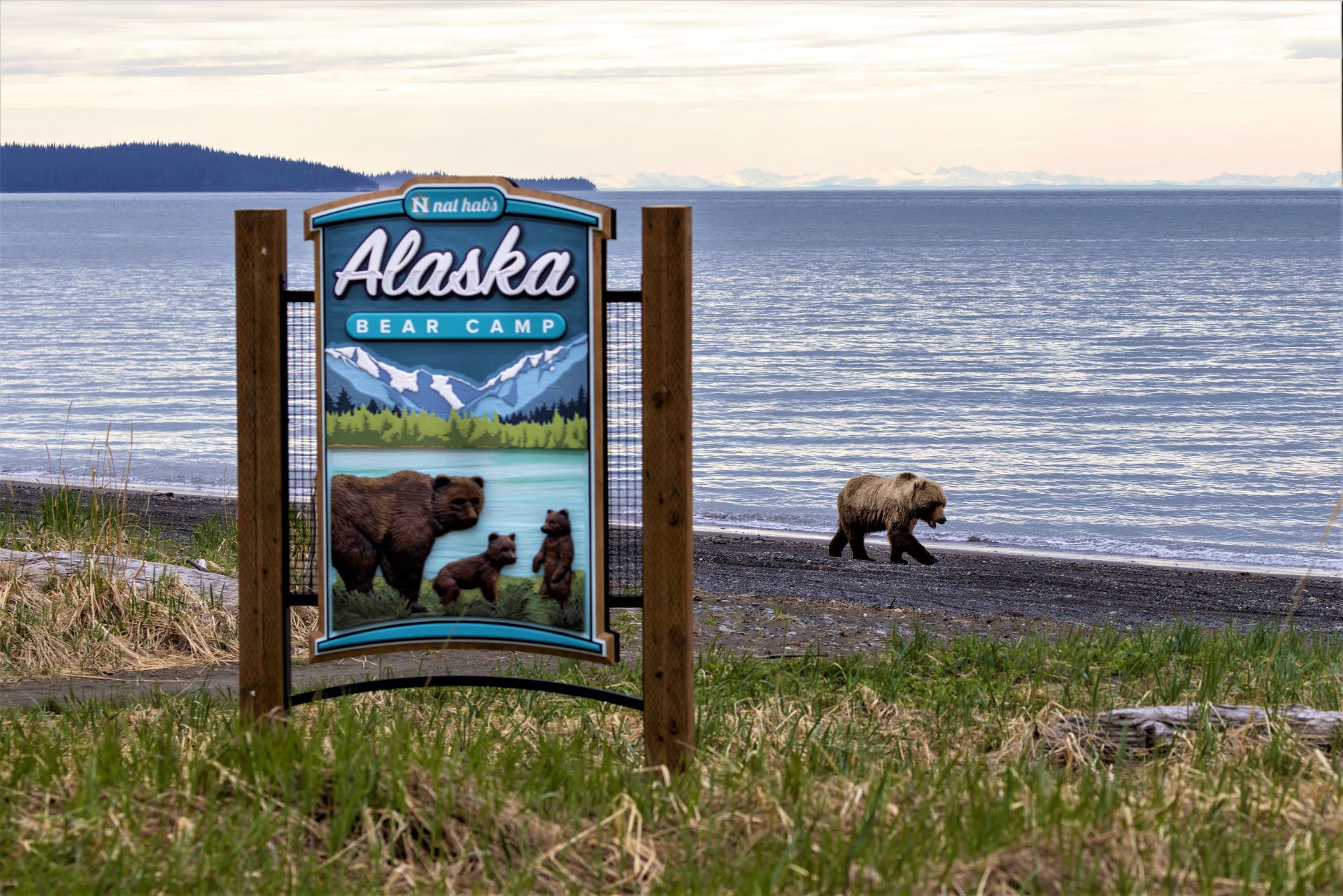
Nat Hab’s Alaska Bear Camp
Byers always had a strong connection with the local Alaskan wildlife and a deep commitment to the land. Bear Camp maintains a similar code of ethics. Throughout its history, the property has won accolades for its commitment to sustainability. Outside Magazine once named it “North America’s Best Bush Camp,” while National Geographic Traveler dubbed Bear Camp one of “America’s Best Adventures.”
Both private and permanent, the camp has been specifically designed to minimize impact on the local wildlife. Solar panels provide the bulk of Bear Camp’s energy needs, while its series of camouflaged “Weather Port” tents blend in seamlessly with the environment.
(Note: In 2026, Alaska Bear Camp will debut brand-new handcrafted cabins with birchwood finishes and floor-to-ceiling windows that frame uninterrupted views of the bay. This will offer unprecedented opportunities for wildlife viewing from the comfort of your abode—you can literally watch iconic Alaskan bears from bed! Each cabin will have twin beds, electrical outlets, a flush toilet, a sink with hot running water and a propane heater to ward off the coastal chill. A nearby bathhouse will offer hot showers.)
Since the early 1980s, Bear Camp has been an inholding of southwest Alaska’s Lake Clark National Park, a four-million-acre, roadless coastal wilderness that’s home to steaming volcanoes, hanging glaciers, alpine tundra and turquoise lakes—including the headwaters of the world’s largest sockeye salmon fishery. The camp is right in the heart of the Alaskan wilderness, a place where brown bears come to feed on sedge grasses, fresh berries and spawning salmon, depending on the season.
> The Bears of Lake Clark National Park
Travelers reach Bear Camp from Homer via bush plane, with manager Caprice Stoner, now in her 20th season, there to greet Nat Hab travelers upon arrival. However, don’t be surprised if some brown bears welcome you here as well. In fact, the bears are sometimes so close in proximity that you can hear them “talking” with one another through a series of woofs and growls. Thankfully, the camp features a raised viewing platform that’s the ideal spot for taking in these sounds—as well as the other intricacies of these magnificent creatures—without intruding on their space.
When it comes to lodging, Bear Camp’s 10 deluxe, two-bed tent cabins overlooking the sapphire waters of the Cook Inlet provide the perfect overnight accommodations. The camp’s communal dining tent is a great place for catching up with other travelers on the day’s bear sightings and adventures, as well as for charging your iPhones and cameras, and/or poring over a small library of curated Alaska-themed books. Of course, fresh, locally sourced meals, including regional fish and seafood, are also par for the course.
> A Closer Look at Nat Hab’s Alaska Bear Camp

The Importance of Bear Tourism
Seeing and experiencing Alaska’s wildlife first-hand through a place like Bear Camp is not only a great way to contribute to the local economy, but it provides a better understanding of the importance of bears, eagles, moose, and other animals within the greater ecosystem. Here, it’s just you and the local wildlife. You’ll learn about their habits and habitats, as well as threats and conservation efforts to protect these beloved bruins.
By participating in bear tourism, you’ll also help Alaska remain the rugged and wild frontier that has long drawn pioneering souls like Byers and protect the pristine nature of the country’s least densely populated state.
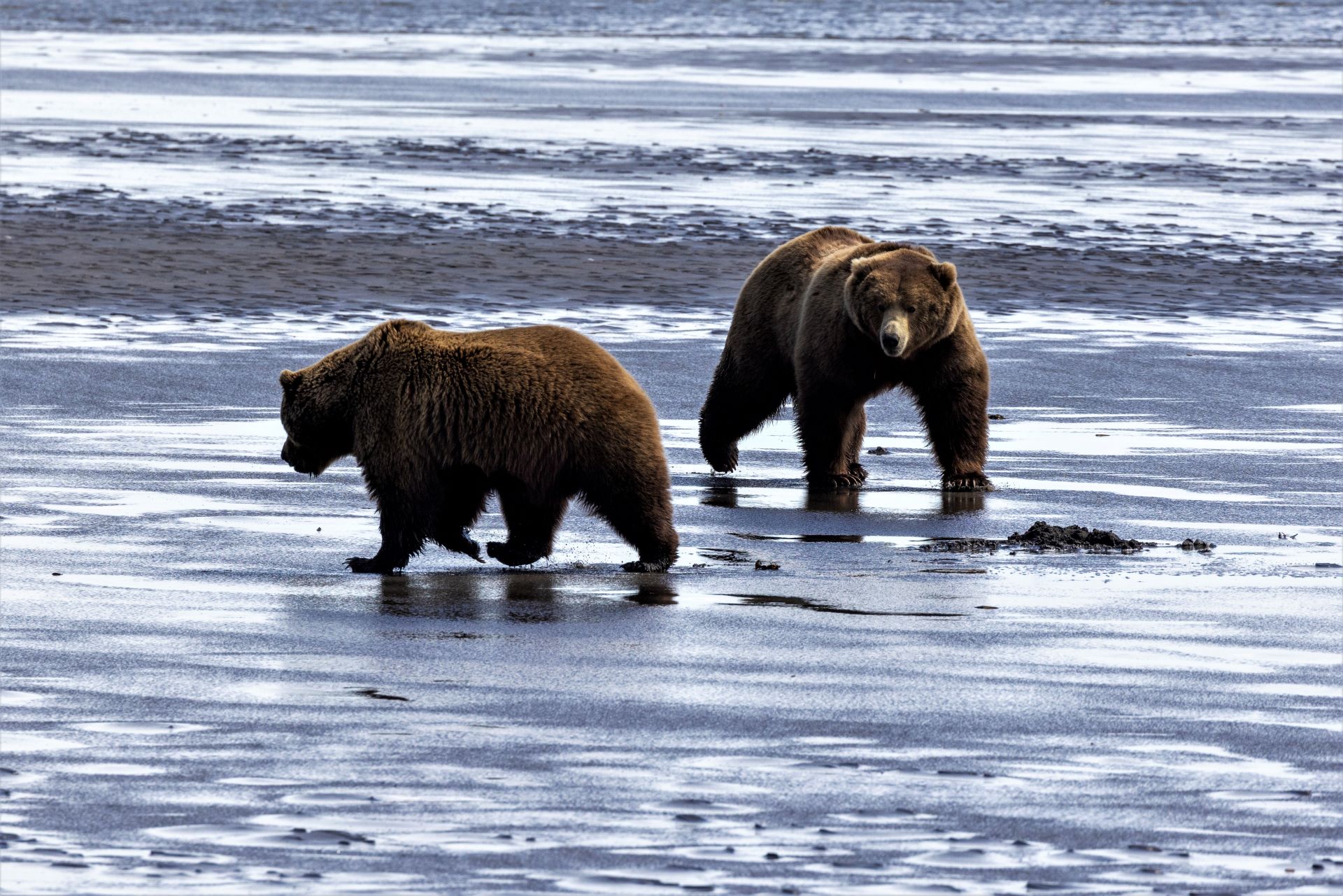
All photos © Court Whelan
Bunk with brown bears at Nat Hab’s private Alaska Bear Camp!






